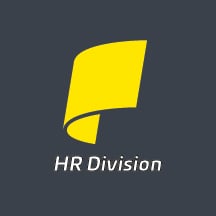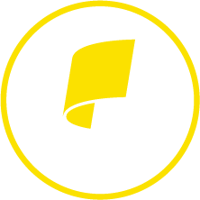Are Your Benefits Keeping Up? Learn how benefits trends can help you manage costs and attract the employees your business depends on.
In today's labor market, salary alone won't seal the deal. If you're grappling with talent shortages, turnover, or rising costs, it’s time to take a closer look at something often underestimated — your employee benefits program.
Offering benefits is no longer just about checking a box. It’s about making a strategic investment. And with healthcare costs climbing for the third year in a row, that investment is getting more expensive — and even more important to get right.
The Cost of Falling Behind
 According to a Mercer study, the average total health benefit cost per employee is projected to rise 5.8% in 2025, that's even after cost-containment efforts. If no action is taken, employers estimate that number could hit 7% — and for smaller employers with fully insured health plans, it could climb to 9%.
According to a Mercer study, the average total health benefit cost per employee is projected to rise 5.8% in 2025, that's even after cost-containment efforts. If no action is taken, employers estimate that number could hit 7% — and for smaller employers with fully insured health plans, it could climb to 9%.
Those are real numbers with real impact on your bottom line. And yet, many small businesses are still flying blind when it comes to their employee benefits program.
That’s where benefits benchmarking comes in.
What Is Benefits Benchmarking?
Benchmarking is the process of comparing your employee benefits package against those of similar businesses in your industry, region, and size. The goal? To see how you stack up, understand what your workforce actually values, and spot opportunities to save money without sacrificing value.
 Studies show a consistent disconnect between what employers think they’re offering — and what employees actually want or use.
Studies show a consistent disconnect between what employers think they’re offering — and what employees actually want or use.
With benchmarking, you get clarity. You can avoid wasting dollars on underused perks while reallocating resources toward benefits that attract and retain talent — all while improving your cost-efficiency.
The Benefits of Getting the Data
Control Rising Healthcare Costs with Data-Driven Decisions. Health insurance is usually the single most expensive part of a benefits package — and looking ahead — it’s only getting pricier. Benchmarking gives you insights into how other employers are mitigating costs, whether it's shopping for new plans, making plan design changes, or implementing employee contribution strategies.
🔰READ MORE: ➡️➡️How to Solve Small Business Challenges in Superhero Style
Instead of simply accepting another annual premium increase, you can use benchmarking data to:
🔹Assess whether your current plans are competitively priced🔹Identify better-value carriers or funding arrangements
🔹Target benefit offerings that your employees truly value
🔹Reduce wasteful spending on unused or undervalued benefits
 Attract and Retain Talent — Without Breaking the Bank. With competition for skilled workers at an all-time high, strong benefits can be a major differentiator — especially when compensation budgets are tight. Studies show that a majority of job seekers weigh better health, dental, and vision insurance more heavily than salary.
Attract and Retain Talent — Without Breaking the Bank. With competition for skilled workers at an all-time high, strong benefits can be a major differentiator — especially when compensation budgets are tight. Studies show that a majority of job seekers weigh better health, dental, and vision insurance more heavily than salary.
By using benchmarking data, employers can:
🔹Offer competitive benefits without overpaying🔹Highlight benefits clearly in job postings to boost applicant interest
🔹Retain top talent by meeting their evolving needs
According to SHRM, 60% of employees say benefits are a key reason they stay with their employer. That makes optimizing your offerings one of the most cost-effective ways to reduce turnover.
Deliver the Right Benefits to the Right People. A generic, one-size-fits-all benefits plan no longer cuts it. Younger employees may prioritize mental wellness and flexibility, while older workers may be looking for robust healthcare and retirement planning.
Benchmarking helps HR teams identify benefit trends by demographics and fine-tune offerings accordingly. It’s not about offering more benefits — it’s about offering the right ones.
 Boost Engagement and Productivity. Benefits aren’t just about cost — they directly impact performance. The 2024 MetLife Employee Benefits Trend Study found that employees who feel supported through their benefits are, on average, 20% more productive.
Boost Engagement and Productivity. Benefits aren’t just about cost — they directly impact performance. The 2024 MetLife Employee Benefits Trend Study found that employees who feel supported through their benefits are, on average, 20% more productive.
A competitive benefits package is one way to show your employees you care and that you are invested in their health and well-being. As a result, your workers are more likely to:
🔹Show up more consistently🔹Deliver better work
🔹Contribute to a stronger workplace culture
🔹And engaged employees stay longer, reducing hiring and training costs.
Stay Competitive in a Rapidly Changing Labor Market. From hybrid work expectations to increasing demand for financial wellness tools and mental health coverage, the benefits landscape is evolving — fast. Benchmarking helps you stay ahead of benefit trends, adjust to shifting employee expectations, and future-proof your offerings for the next generation of workers. In short, it ensures your 2025 benefits package doesn’t look like it’s stuck in 2019.
🔰READ MORE: ➡️➡️Work Smarter, Not Harder with the Right HR Tech
Build Trust. Spend Smarter. Compete Better.
Spending smarter begins with understanding how your benefits compare against the competition. As healthcare costs continue to rise, employees want — and expect — benefits that reflect their values and needs. Benchmarking transforms benefits from a static cost into a dynamic business tool. With the right data, you can:
- Optimize your spend
- Strengthen your workforce
- Improve retention
- Support long-term business goals
📊Don’t Guess — Get the Data!
As open enrollment season approaches, now is the time to reassess your benefits strategy.
 Our recently released 2025 Benefits Benchmark Report, presented by Scott Insurance, provides clear and actionable insights based on one of the most comprehensive studies in the country.
Our recently released 2025 Benefits Benchmark Report, presented by Scott Insurance, provides clear and actionable insights based on one of the most comprehensive studies in the country.
Benchmarking data helps you connect the dots between your benefits package and your broader business goals — whether it’s scaling up, improving retention, or boosting efficiency.
In this video, you’ll learn:
- How national and regional trends are reshaping benefits
- What today’s workforce really wants
- How your offerings compare — and where you may be overspending
- Smart strategies for cost control and talent retention
▶️Watch Now!
Explore the full 2025 Benefits Benchmark Report ▶️ HERE
And if you need help making sense of your options, just give us a call at (800) 446-6567 — we're here to help.
About Propel HR. Propel HR is an IRS-certified PEO that has been a leading provider of human resources and payroll solutions for 25 years. Propel partners with small to mid-sized businesses to manage payroll, employee benefits, compliance, and risks, and other HR functions in a way that maximizes efficiency and reduces costs. For more information, visit propelhr.com










